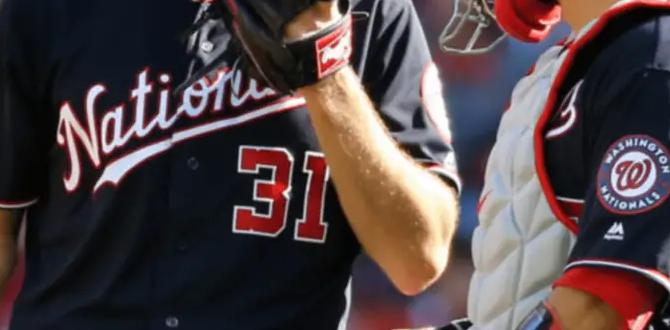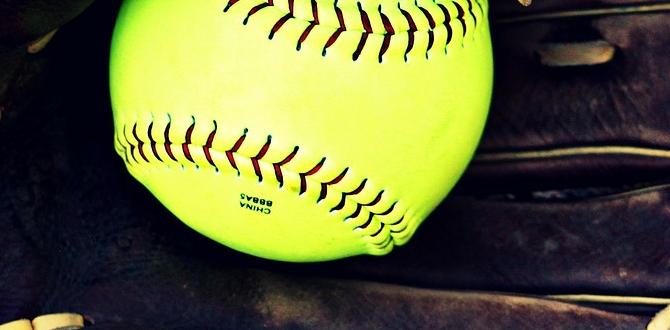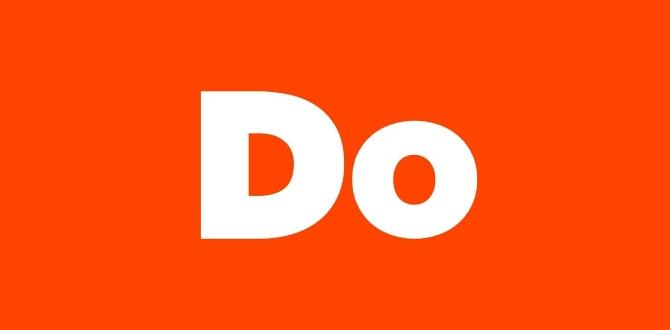Quick Summary: A catcher’s helmet for Little League is crucial for protecting young players. Look for helmets certified by NOCSAE, with a snug fit, good ventilation, and comfortable padding. Proper protection ensures safety, allowing kids to focus on developing their skills and enjoying the game.
Catchers Helmet for Little League: Your Essential Safety Guide
Hitting a fastball, blocking a wild pitch, or snagging a foul tip – these are all thrilling parts of baseball! But for young catchers, the position comes with its own set of risks. The sound of a ball hitting the mask, or the impact of a stray foul ball, can be a little daunting. That’s why choosing the right catcher’s helmet for your Little Leaguer is so incredibly important. It’s not just about looking the part; it’s about staying safe so they can have fun and learn. We’re going to break down everything you need to know to pick the perfect helmet, step by simple step.
Why a Catcher’s Helmet is a Must-Have
The catcher’s spot on the baseball field is unique. They’re right behind home plate, a hub of action. This means they’re in the line of fire for pitches, foul balls, and even collisions. Without proper protection, a young catcher is exposed to significant risks, from minor bumps and bruises to more serious injuries. A well-fitting catcher’s helmet is designed to absorb impact and shield the head and face, making it one of the most critical pieces of safety equipment in youth baseball. It’s the first line of defense, allowing young athletes to squat, frame pitches, and make plays with confidence.
Think about it: the speed of a baseball, even at the Little League level, can be surprising. A well-designed helmet acts as a shock absorber, significantly reducing the force of any impact. This protection is not just about preventing immediate injuries; it’s about fostering a positive and safe environment for kids to develop their love for the game without unnecessary fear.
What Makes a Catcher’s Helmet “Little League” Specific?
While many catcher’s helmets share common features, “Little League” specific helmets often take into account the size, typical speeds, and developmental stages of younger players. They tend to be lighter, easier to adjust for growing kids, and designed with specific head shapes and protection needs in mind. The focus is on providing robust protection without being overly cumbersome, allowing for maximum mobility and comfort.
Key considerations often include:
- Size and Fit: Little League helmets are designed to accommodate smaller heads and are often adjustable to grow with the player.
- Weight: Lighter helmets reduce neck strain and fatigue, which is important for young athletes still developing their strength.
- Protection Standards: Ensuring the helmet meets safety certifications specifically relevant for youth sports.
- Visibility: A design that doesn’t impede the catcher’s ability to see the field of play.
Key Features to Look for in a Little League Catcher’s Helmet
When you’re on the hunt for the perfect catcher’s helmet, zero in on these essential features. They’re the building blocks of protection, comfort, and overall performance for your young backstop.
1. Safety Certifications: The Non-Negotiable
This is the absolute most important feature. A catcher’s helmet must meet strict safety standards to ensure it can adequately protect a player from impact. In the United States, the primary certification you’ll see is from NOCSAE (National Operating Committee on Standards for Athletic Equipment). Look for a NOCSAE sticker or tag on the helmet, typically found inside. This means the helmet has been tested and meets specific performance requirements for impact absorption. Without this certification, the helmet is not considered safe for competitive play.
2. Fit and Adjustability
A helmet that doesn’t fit properly won’t provide adequate protection, no matter how well-made it is. Catchers helmets for Little League should be snug but not tight. Key elements of a good fit include:
- No Gap: There shouldn’t be a significant gap between the helmet and the forehead or the back of the head.
- Secure Straps: The chin strap should fit comfortably and securely, keeping the helmet in place during play.
- Adjustable Systems: Many youth helmets feature adjustable dial systems or internal padding that allows for a customized fit. This is crucial as young players grow quickly. A simple turn of a dial at the back of the helmet can often tighten or loosen the fit.
A properly fitted helmet will stay put when the player moves their head, catches a ball, or even if they happen to take a tumble. It shouldn’t wobble or shift significantly.
3. Padding and Comfort
Inside the helmet, the padding plays a huge role in comfort and shock absorption. Look for helmets with:
- Moisture-Wicking Liners: These help draw sweat away from the head, keeping the catcher cooler and more comfortable during long games or practices.
- Removable/Washable Padding: This is a fantastic feature for hygiene. It allows parents and coaches to easily clean the pads to prevent odors and keep things fresh.
- Strategic Cushioning: The padding should be thick enough to cushion impacts but not so thick that it makes the helmet bulky or obstructs vision.
4. Ventilation
Catching is a demanding position, and players can get hot quickly. Good ventilation is key to keeping a young catcher comfortable and focused. Look for helmets with plenty of vents designed to allow airflow. This helps dissipate heat and prevents overheating, which can lead to fatigue and decreased performance. Strategic vent placement ensures that protection isn’t compromised while air can circulate freely.
5. Cage Design
The facemask or cage is what protects the player’s face. For catcher’s helmets:
- Steel Construction: Most good quality catcher’s cages are made of sturdy steel, designed to withstand impacts.
- Clear Visibility: The bars of the cage should be spaced in a way that provides excellent visibility of the field without creating blind spots. Players need to see runners, the ball, and their teammates.
- Integrated Design: Many modern helmets have a cage that is integrated directly into the helmet shell, offering a more secure and streamlined fit than bolt-on cages.
Ensure the cage doesn’t interfere with the player’s ability to communicate with their pitcher or other infielders.
6. Weight
While robust protection is essential, a helmet that is too heavy can cause neck strain and fatigue. Little League helmets are often designed to be as lightweight as possible while still meeting safety standards. This trade-off means kids can wear them for longer periods without excessive discomfort and can move their heads more freely when tracking pitches or looking for plays.
Types of Catcher’s Helmets (and What to Choose for Little League)
When browsing catcher’s gear, you’ll typically encounter a few styles. For Little League, one type stands out as the best choice.
1. The “Hockey-Style” Catcher’s Helmet
This is the most common style you’ll see for baseball and softball catchers. It consists of a hard-shell helmet with a built-in, cage-like facemask. These are specifically designed to protect the entire face and head from impacts common in baseball. They offer comprehensive protection and are generally the preferred choice for Little League catchers.
2. The “Skull Cap” Helmet with a Separate Mask
This setup involves a simple, padded cap that covers the head, and a separate mask that attaches to it. While some players might prefer this for its lightweight feel (often used by players in other positions who might experience glancing blows or in less aggressive leagues), it generally offers less complete facial protection than a dedicated catcher’s helmet. For the catcher’s position, with its high risk of direct impacts, this is usually not sufficient.
3. Multi-Sport Helmets
Some helmets are marketed for multiple sports. While they might offer some protection, it’s best to stick with helmets specifically designed and certified for baseball. They are engineered to handle the specific types of impacts and stresses encountered on the diamond.
Recommendation for Little League: Stick with the hockey-style catcher’s helmet. It offers the most comprehensive protection for the unique demands of the catcher’s position.
Sizing Your Little League Catcher’s Helmet
Getting the right size is paramount. A helmet that’s too big can slip, exposing vulnerable areas, while one too small will be uncomfortable and restrictive. Fortunately, most youth catcher’s helmets are designed with adjustability in mind.
Common Sizing Methods
Manufacturers usually provide sizing charts based on head circumference. Here’s how to measure:
- Get a Flexible Measuring Tape: Use a tailor’s tape measure or a piece of string and a ruler.
- Measure Around the Widest Part of the Head: Wrap the tape measure around your child’s head, about an inch above the eyebrows and just above the ears. Ensure the tape is snug but not so tight that it’s uncomfortable.
- Note the Measurement: Record the measurement in both inches and centimeters.
- Consult the Manufacturer’s Sizing Chart: Compare your measurement to the size chart provided by the helmet manufacturer. Most charts will give you a range (e.g., 18-20 inches or 46-51 cm).
Adjustable Fit Systems
As mentioned, most Little League catcher’s helmets feature an internal adjustment system, often a dial at the back. Once you’ve selected a helmet that falls within the correct circumference range, use this dial:
- Place the Helmet: Have your child put the helmet on.
- Adjust the Dial: Turn the dial until the helmet feels snug and secure. It should not move freely when they shake their head.
- Check for Comfort: Ensure there are no pressure points or uncomfortable tightness. The chin strap should be adjusted so it’s snug against the chin but still allows for comfortable breathing.
It’s always best, if possible, for the child to try the helmet on before purchasing. A proper fit ensures maximum safety and comfort.
Essential Catcher’s Gear Alongside the Helmet
While the helmet is king, a catcher needs a complete set of gear to stay safe and perform their best. Here’s a quick rundown of other crucial pieces:
| Gear Item | Importance for Little League Catchers | Key Features to Look For |
|---|---|---|
| Catcher’s Mask/Helmet | Primary head and face protection. Essential for ALL levels of play. | NOCSAE certified, snug fit, good ventilation, comfortable padding. |
| Chest Protector | Protects the torso from foul balls and errant pitches. Crucial for blocking. | Good padding coverage, adjustable straps for a secure fit, flexibility for movement. |
| Leg Guards | Protect the shins, knees, and ankles from pitches, foul balls, and collisions. | Full coverage, secure strapping system, breathable materials, good mobility. |
| Catcher’s Mitt | A specialized glove designed for catching pitches. Larger and more padded than a fielder’s glove. | Proper size for youth (often 30-33 inches), deep pocket, good padding, easy to close. |
| Throat Protector | A piece that extends from the helmet to protect the throat area from direct impacts. | Secure attachment to helmet, good length to cover the throat adequately. |
All this gear works together as a system. The helmet protects the head and face, the chest protector shields the body, and leg guards safeguard the lower limbs. A good catcher’s mitt helps secure pitches, reducing the chance of them getting away. Investing in a full set of quality gear is an investment in your child’s safety and development as a player.
Maintaining Your Catcher’s Helmet
Proper care will extend the life of your catcher’s helmet and ensure it continues to provide the best possible protection. Here’s how to keep it in top shape:
Cleaning
- Exterior: Wipe down the hard-shell exterior with a damp cloth and mild soap to remove dirt and grime. Avoid harsh chemicals or abrasive cleaners, which can damage the plastic.
- Interior Padding: If the padding is removable, take it out and wash it by hand with mild soap and cool water, or follow the manufacturer’s specific instructions. If it’s not removable, use a damp cloth with a very mild soap solution and wipe it down, then follow with a clean damp cloth to rinse.
- Drying: Always allow the helmet and padding to air dry completely before storing or putting it back on the player. Never use a high-heat dryer, as this can warp or damage the materials.
Inspection
Before and after each game or practice, give the helmet a quick check:
- Cracks or Damage: Look for any visible cracks, deep scratches, or dents on the shell or cage. Any significant damage means the helmet should be replaced immediately.
- Padding: Ensure all padding is securely in place and not torn or excessively worn.
- Straps and Buckles: Check the chin strap and any adjustment buckles for wear and tear. Make sure they function correctly.
- Cage Security: Verify that the facemask is securely attached to the helmet, with no loose screws or connections.
If you’re ever unsure about the integrity of the helmet after an impact, it’s best to err on the side of caution and consider replacing it.
When to Replace a Catcher’s Helmet
Helmets are designed for one primary purpose: to absorb the energy of an impact. Once they’ve done their job, their ability to protect is compromised. Here are the key reasons to replace a catcher’s helmet:
- After a Significant Impact: Even if there’s no visible damage, a helmet that has sustained a direct, forceful impact (like a hard foul ball to the mask or a significant head collision) should be replaced. The internal protective materials may have been compressed or damaged, rendering them less effective.
- Visible Damage: Cracks, deep gouges, dents, or a bent facemask are clear indicators that the helmet’s structural integrity is compromised and it can no longer offer adequate protection.
- Worn-Out Padding: While padding can often be replaced, if the helmet’s interior structure is deteriorating along with the padding, it might be time for a new helmet.
- Outgrown Size: If the helmet no longer fits correctly despite being fully adjusted, it’s time for an upgrade.
- Old and Outdated Technology: Safety standards evolve. If a helmet is very old (typically 5-10 years, depending on use and manufacturer recommendations), it may not meet current NOCSAE standards, even if it was certified when new.
Think of a helmet like a car’s airbag – it’s a single-use safety device for significant impacts. It’s better to be safe than sorry when it comes to protecting





